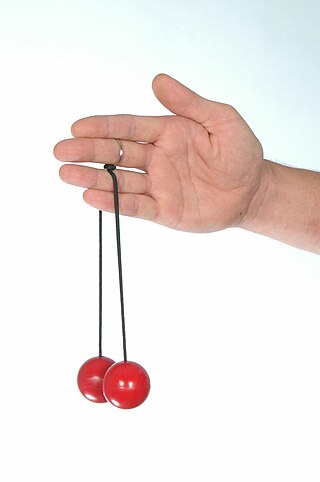
In court proceedings, a defendant is a person or object who is the party either accused of committing a crime in criminal prosecution or against whom some type of civil relief is being sought in a civil case.

Hazardous waste is waste that must be handled properly to avoid damaging human health or the environment. Waste can be hazardous because it is toxic, reacts violently with other chemicals, or is corrosive, among other traits. As of 2022, humanity produces 300-500 million metric tons of hazardous waste annually. Some common examples are electronics, batteries, and paints. An important aspect of managing hazardous waste is safe disposal. Hazardous waste can be stored in hazardous waste landfills, burned, or recycled into something new. Managing hazardous waste is important to achieve worldwide sustainability. Hazardous waste is regulated on national scale by national governments as well as on an international scale by the United Nations (UN) and international treaties.

The National Environmental Policy Act (NEPA) is a United States environmental law designed to promote the enhancement of the environment. It created new laws requiring U.S. federal government agencies to evaluate the environmental impacts of their actions and decisions, and it established the President's Council on Environmental Quality (CEQ). The Act was passed by the U.S. Congress in December 1969 and signed into law by President Richard Nixon on January 1, 1970. To date, more than 100 nations around the world have enacted national environmental policies modeled after NEPA.

Clackers are toys that were popular in the late 1960s and early 1970s.
In rem jurisdiction is a legal term describing the power a court may exercise over property or a "status" against a person over whom the court does not have in personam jurisdiction. Jurisdiction in rem assumes the property or status is the primary object of the action, rather than personal liabilities not necessarily associated with the property.
Gonzales v. O Centro Espírita Beneficente União do Vegetal, 546 U.S. 418 (2006), was a United States Supreme Court case in which the Court held that, under the Religious Freedom Restoration Act of 1993, the government had failed to show a compelling interest in prosecuting religious adherents for drinking a sacramental tea containing a Schedule I controlled substance. After the federal government seized its sacramental tea, the União do Vegetal (UDV), the New Mexican branch of a Brazilian church that imbibes ayahuasca in its services, sued, claiming the seizure was illegal, and sought to ensure future importation of the tea for religious use. The church won a preliminary injunction from the United States District Court for the District of New Mexico, which was affirmed on appeal.

United States of America v. $124,700 in U.S. Currency, 458 F.3d 822, was a decision of the United States Court of Appeals for the Eighth Circuit that was handed down on August 18, 2006.
Right to know is a human right enshrined in law in several countries. UNESCO defines it as the right for people to "participate in an informed way in decisions that affect them, while also holding governments and others accountable". It pursues universal access to information as essential foundation of inclusive knowledge societies. It is often defined in the context of the right for people to know about their potential exposure to environmental conditions or substances that may cause illness or injury, but it can also refer more generally to freedom of information or informed consent.
One 1958 Plymouth Sedan v. Pennsylvania, 380 U.S. 693 (1965), was a Supreme Court of the United States case handed down in 1965. The Court ruled that civil forfeiture could not apply where the evidence used to invoke the forfeiture was obtained illegally.

Under United States environmental policy, hazardous waste is a waste that has the potential to:

Nitke v. Gonzalez, 413 F.Supp.2d 262 was a United States District Court for the Southern District of New York case regarding obscene materials published online. The plaintiff challenged the constitutionality of the obscenity provision of the Communications Decency Act (CDA). She claimed that it was overbroad when applied in the context of the Internet because certain contents deemed lawful in some communities and unlawful in others will be restricted due to the open access of the Internet. The plaintiff also sought a permanent injunction against the enforcement of the obscenity provision of the CDA. The court concluded that insufficient evidence was presented to show there was substantial variation in community standards, as applied in the "Miller test", and to show how much protected speech would actually be impaired because of these differences. The relief sought was denied, and the court ruled for the defendant. The Supreme Court subsequently affirmed this ruling without comment.

Cayuga Indian Nation of New York v. Pataki, 413 F.3d 266, is an important precedent in the United States Court of Appeals for the Second Circuit for the litigation of aboriginal title in the United States. Applying the U.S. Supreme Court's recent ruling in City of Sherrill v. Oneida Indian Nation of New York (2005), a divided panel held that the equitable doctrine of laches bars all tribal land claims sounding in ejectment or trespass, for both tribal plaintiffs and the federal government as plaintiff-intervenor.
United States v. 12 200-ft. Reels of Film, 413 U.S. 123 (1973), was an in rem case decided by the United States Supreme Court that considered the question of whether the First Amendment required that citizens be allowed to import obscene material for their personal and private use at home, which was already held to be protected several years earlier. By a 5–4 margin, the Court held that it did not.
Quantity of Books v. Kansas, 378 U.S. 205 (1964), is an in rem United States Supreme Court decision on First Amendment questions relating to the forfeiture of obscene material. By a 7–2 margin, the Court held that a seizure of the books was unconstitutional, since no hearing had been held on whether the books were obscene, and it reversed a Kansas Supreme Court decision that upheld the seizure.
Marcus v. Search Warrant, 367 U.S. 717 (1961), full title Marcus v. Search Warrant of Property at 104 East Tenth Street, Kansas City, Missouri, is an in rem case decided by the United States Supreme Court on the seizure of obscene materials. The Court unanimously overturned a Missouri Supreme Court decision upholding the forfeiture of hundreds of magazines confiscated from a Kansas City wholesaler. It held that both Missouri's procedures for the seizure of allegedly obscene material and the execution of the warrant itself violated the Fourth and Fourteenth amendments' prohibitions on search and seizure without due process. Those violations, in turn, threatened the rights protected by the First Amendment.

United States v. Approximately 64,695 Pounds of Shark Fins is a 2008 decision of the United States Court of Appeals for the Ninth Circuit concerning civil forfeiture in admiralty law. Judge Stephen Reinhardt wrote for a three-judge panel that ordered that the shark fins be returned to their owners, reversing a decision by the Southern District of California. The government did not appeal the case further.

The Hazardous Materials Transportation Act (HMTA), enacted in 1975, is the principal federal law in the United States regulating the transportation of hazardous materials. Its purpose is to "protect against the risks to life, property, and the environment that are inherent in the transportation of hazardous material in intrastate, interstate, and foreign commerce" under the authority of the United States Secretary of Transportation.
Southern Union Co. v. United States, 567 U.S. 343 (2012), was a Supreme Court decision that applied the rule set out in Apprendi v. New Jersey—that certain non-conviction elements of a crime must be proved to a jury—to criminal penalties. The 6–3 decision was authored by Justice Sonia Sotomayor.
Army Corps of Engineers v. Hawkes Co., 578 U.S. ___ (2016), was a case in which the Supreme Court of the United States held that a Clean Water Act jurisdictional determination issued by the United States Army Corps of Engineers is reviewable under the Administrative Procedure Act because jurisdictional determinations constitute "final agency action". For a federal agency decision or action to be reviewable in court under the Administrative Procedures Act, it must be a “final” agency action, meaning that there are no further steps that can be taken before it has an impact on the legal rights or obligations of any affected parties.

The Convention on Cultural Property Implementation Act is a United States Act of Congress that became federal law in 1983. The CCPIA implemented the 1970 UNESCO Convention on the Means of Prohibiting and Preventing the Illicit Import, Export and Transfer of Ownership of Cultural Property. It restricts the importation of some archaeological and ethnological materials into the United States from other State Parties to the Convention.









